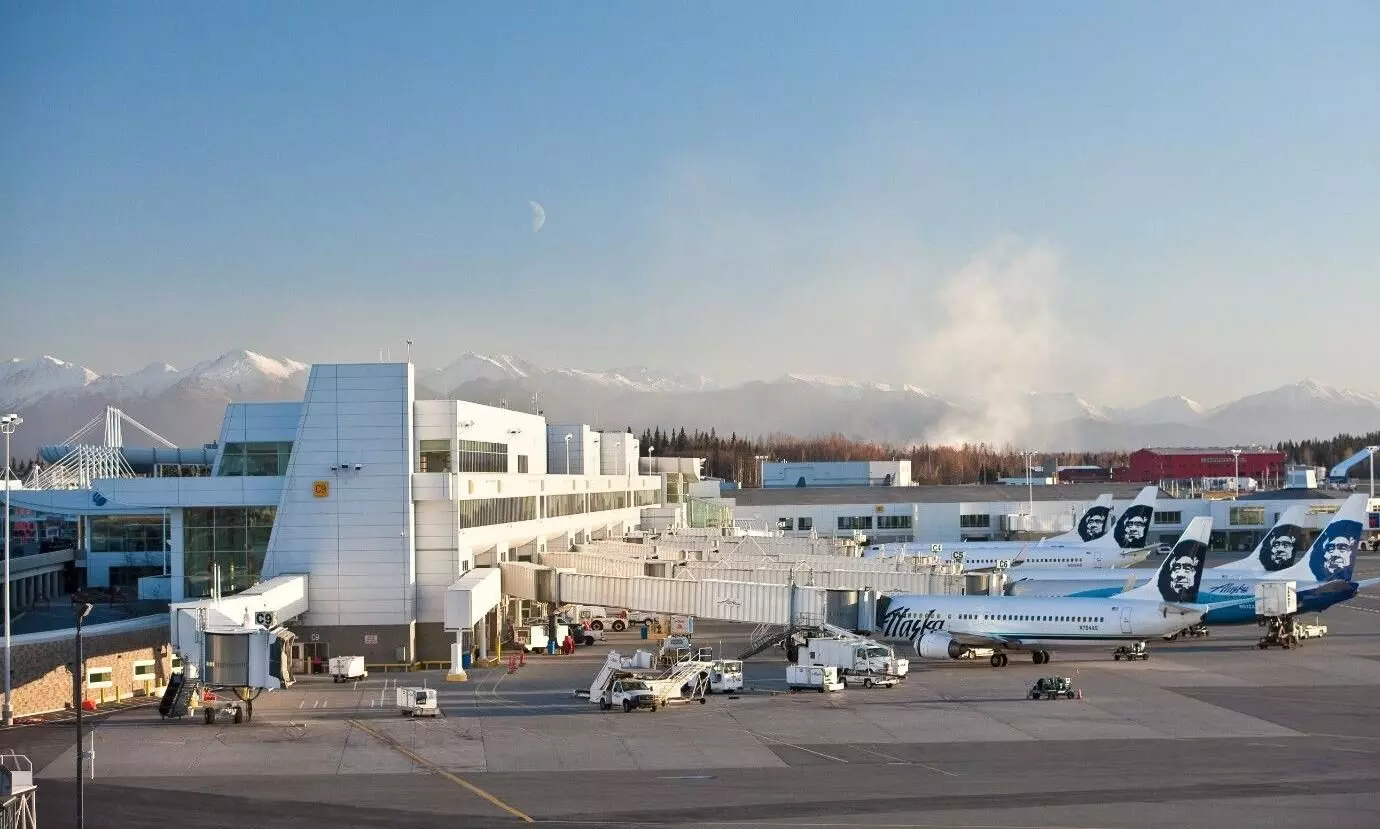
Cargo-centric airports: The ‘build it and they will come’ strategy
Once reliant on passenger operations to stay relevant, many airports are now emerging as cargo-centric powerhouses.
 Ted Stevens Anchorage International Airport
Ted Stevens Anchorage International AirportIn the evolving world of global trade, cargo-centric airports are taking a page from the 1989 baseball film Field of Dreams, where a voice whispers, “If you build it, he will come.” Reimagined as build it, and they will come, this mindset has driven massive investments in infrastructure and technology — often ahead of demand. But as these ambitious projects come online, a key question arises: is this strategy truly paying off?
The rise of cargo-centric airports
Across continents, cargo-airports have carved out distinct roles. Their strategic focus is unmistakable. They position themselves as dedicated cargo hubs that cater to an expanding and increasingly complex market.
“Over the past few years, Ted Stevens Anchorage International Airport (ANC) has seen sustained cargo growth, surpassing pre-pandemic levels. Carriers are leveraging ANC’s 24/7 capabilities, uncongested airspace, and favourable customs processing to streamline trans-Pacific operations,” explains Angela Spear, Director of the Alaska International Airport System (AIAS).
Similarly, Fraport is strategically aligning its Frankfurt hub with anticipated growth in the air cargo industry. “The Masterplan CargoHub reflects our commitment to enhancing operations through infrastructure and digitalisation investments," states Denis de Farias Duarte, Vice President of Cargo Development at Fraport.
"80% of our state is not on the road system so travel is a way of life and critical in a way it is not in other states."
Angela Spear, Alaska International Airport System
The joint venture ‘allivate’ with DAKOSY focuses on digitising air cargo handling to enhance transparency, efficiency, and security. Frankfurt CargoHub is expected to align with overall market trends. Airfreight volumes are projected to exceed three million metric tonnes by 2040.
Commenting on the challenges in Hong Kong, Wilson Kwong, Chief Executive of Hactl, shares, “It would not have been possible to operate at Hactl’s vast scale of throughput with the space constraints typical of Hong Kong unless we had invested in a large multi-level cargo handling system.”
Markus Heinelt, Director of Traffic Development Cargo at Munich Airport, stated, “The cargo business has become an integral part of our corporate strategy, and we see great growth potential due to the strong markets we serve. We are also piloting automated logistics.”
He further noted, “In recent years, we have experienced enormous growth in attractive long-haul services, especially to the US and Asian destinations, which increased our lower-deck capacities. In addition, the main-deck offer has picked up. This has also led to a strong demand for additional handling space from airlines and logistics companies.”
At Ostend-Bruges Airport, 24/7 operations without slot restrictions provide cargo carriers with the flexibility and speed required for efficient logistics. The airport has developed specialised expertise in handling perishables, e-commerce, flowers, and pharmaceuticals. These are four high-value, time-sensitive cargo segments that continue to experience strong growth.
Nathan De Valck, CEO, Ostend-Bruges Airport, noted, “Ostend-Bruges Airport benefits from a lean organisational structure, making it easy and efficient for businesses to operate. The security boundary between landside and airside can be configured to meet specific operational needs, ensuring minimal disruption and time loss.”
“As a major air traffic hub, cargo remains essential, particularly since belly freight offers passenger airlines a valuable additional revenue stream.”
Denis de Farias Duarte, Fraport
Revenue Models and Market Volatility in Cargo-Centric Airports
Cargo-centric airports generate revenue through freight handling, warehousing, and value-added logistics services. This differs significantly from passenger airports that rely heavily on ticket sales and associated services. Cargo hubs often face large upfront infrastructure costs.
Kwong noted, “The large investments we have made have been essential in establishing a comprehensive scope of high-quality handling services. Given the large customer base which Hactl enjoys, we are largely insulated from the peaks and troughs of individual trade lanes.”
Heinelt stated, “The greatest volatility is seen in pure freighters in the general cargo sector. We will increase this share, but it will not be as high as at other airports, where it accounts for almost 100% of tonnage.”
This insulation from volatility is crucial. Unlike passenger airports, which suffered severe revenue drops during travel restrictions, cargo-centric hubs often proved resilient or even thrived. However, risk remains a constant companion, as market demand for airfreight can be unpredictable.
Digital innovation, investment strategies, and long-term planning
“At Frankfurt our focus lies in enabling the ecosystem through collaborative platforms and digital innovation,” explained Duarte. Digital solutions powered by Allivate enhance transparency, efficiency, and data-driven decision-making across the cargo handling process. These tools enable improved forecasting, resource planning, and real-time responsiveness, which are critical for managing the volatility associated with pharma and perishables logistics.
Duarte added, “By investing in process enhancement and digital infrastructure, we aim to create a resilient and agile environment that empowers our partners to adapt to changing market dynamics without bearing the full burden of infrastructure investment alone.”
"The large investments which we have made have been essential in establishing a comprehensive scope of high quality handling services. "
Wilson Kwong, Hactl
At Ostend-Bruges Airport, the investment strategy is driven by long-term trends rather than short-term market fluctuations. The airport recognises that while global demand can be cyclical, fundamental shifts in supply chains are permanent. Infrastructure projects are closely aligned with the actual needs of logistics operators.
Investments are made based on structural changes in logistics, guided by input from partners. The airport collaborates with long-term partners who possess the financial strength to consider extended return on investment periods.
De Valck noted, “Ostend-Bruges Airport has significant land reserves to accommodate evolving market needs, with its cargo village project already underway. The first phase includes a 16,000 square metre warehouse and the capacity to expand across 140 hectares, offering substantial development potential. We focus on what cargo operators tell us they actually need, not what we think they might want”
Digitalisation has been a game-changer. Systems like Frankfurt’s FAIR@Link and Hactl’s COSAC-plus automate data exchange and optimise cargo flows. Hactl’s integration of 5G technology now enables real-time coordination of autonomous vehicles and AI-powered security patrols, raising efficiency and safety standards.
Kwong noted, “Hactl’s partnership with Hong Kong Telecom brings the first dedicated 5G network for air cargo operations in Hong Kong, enabling ultra-low latency and secure connectivity. This will support robotics, autonomous vehicles, and digital systems across SuperTerminal 1, improving efficiency and reducing manual processes. Our AI-powered patrol robots will enhance security with real-time surveillance, while the 5G-enabled Smart Cargo Locating system offers precise tracking of cargo within the terminal.”
“Our Cargo Dashboard provides real-time data to optimise processes, while Smart Pick-up pilots paperless import handling,” says Denis de Farias Duarte. “These digital solutions improve transparency, efficiency, and security. These are critical factors in managing volatile cargo flows.”
Passenger vs cargo
“While it is true that the aviation industry as a whole is mostly reliant on passenger revenues, the air cargo industry is mostly reliant on reliable and resilient capacity,” explains Kwong. “That was graphically demonstrated during the Covid-19 pandemic when the abrupt loss of most bellyhold capacity around the world caused huge supply chain disruption.”
As a result, there will always be a place for freighters and for airports which provide the cargo-centric services that freighter operators demand. Hong Kong is living proof of this. Its significant share of capacity is created by freighters, and, therefore, a significant share of revenue is created by cargo.
Cargo hubs like Fraport and Anchorage highlight this contrast. “Unlike passenger-centric airports that experienced significant downturns during global travel disruptions, ANC maintained steady operations and revenue due to its cargo-focused business model,” says Spear.
“Cargo isn’t about runways, it’s about relationships.Our partners tell us what they need, and we build around that.”
Nathan De Valck, Ostend-Bruges Airport
Cargo activity has sustained ANC through recent economic slowdowns and has grown to account for the majority of landing and fuel flowage revenue. The airport’s diversified portfolio and critical role in global logistics have supported its financial resilience, even during periods of reduced passenger traffic.
“Both passenger and cargo segments are vital pillars driving our operations. We do not separate these in our financial reports,” notes Denis de Farias Duarte of Fraport. “As a major air traffic hub, cargo remains essential, particularly since belly freight offers passenger airlines a valuable additional revenue stream.”
De Valck stated that cargo revenue at the airport has significantly outperformed the growth of passenger operations in recent years. He notes that while passenger traffic is gradually recovering from the impact of Covid-19, cargo has demonstrated resilience and now serves as a core growth engine for the airport.
Regional Strengths
Frankfurt Airport serves as a vital link in Germany’s export-driven economy. It offers unmatched connectivity and a robust ecosystem of over 250 logistics companies. In Asia, Hactl’s dominance is tied closely to Hong Kong’s geography and regulatory advantages. “Hong Kong’s central location between east and west, its juxtaposition to mainland China, its bilingual workforce, and its modern customs regime all contribute to maintaining our leading position,” says Kwong.
Situated on Belgium’s coast with excellent multimodal connectivity, Ostend-Bruges Airport serves as a convenient and efficient entry point into the European logistics network. The airport offers proximity to major European markets without the congestion common at larger cargo airports.
Meanwhile, Anchorage International Airport (ANC) leverages Alaska’s strategic location and quick ground handling model to offer seamless cold chain connectivity. “Despite Alaska’s climate, ANC’s efficient transfer model makes it ideal for rapid movement of perishables and pharma between continents,” says Spear.
“We are planning investments of around EUR 4 million in expanded cargo handling space, which will increase our facilities by around 8,000 sqm.”
Markus Heinelt, Munich Airport
The future of cargo-centric airports
The ‘build it and they will come’ strategy, while risky, is increasingly validated by shifting trade patterns and the need for resilient logistics infrastructure. Cargo-centric airports that invested wisely in technology, collaboration, and specialised facilities are now transforming regional economies.
Looking ahead, the line between passenger and cargo airports may blur, with hybrid models offering the best of both worlds. However, the core value of dedicated cargo hubs remains clear. They are indispensable to a global economy that demands speed, reliability, and innovation.
The article was originally published in the June 2025 issue of The STAT Trade Times.

